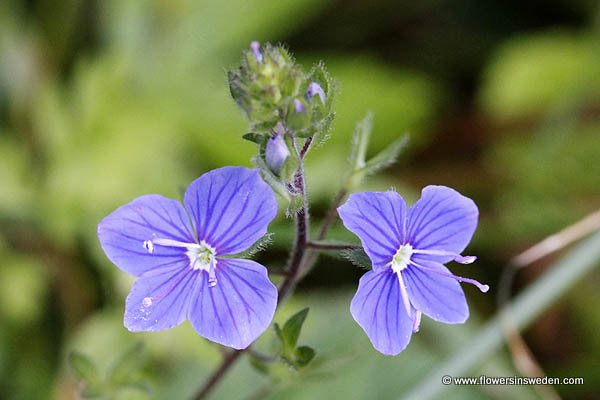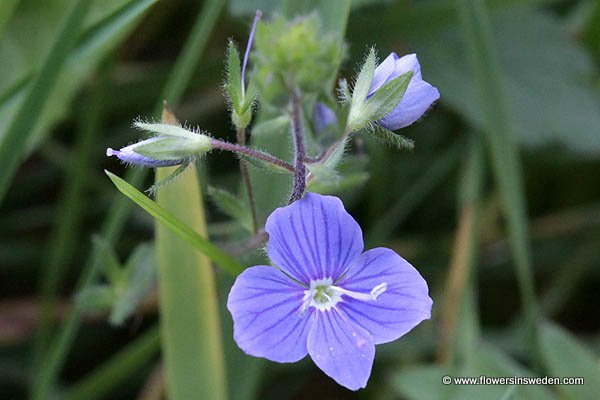
| Scientific name: | Veronica beccabunga L. | |
| Swedish name: | Bäckveronika | |
| German name: | Bachbunge | |
| Nederlandse naam: | Beekpunge | |
| English name: | Brooklime, European speedwell | |
| Family: | Scrophulariaceae, Figwort family, Lejongapsväxter |

|
| Life form: | Perennial succulent herb | |
| Stems: | Limp–ascending, roots from nodes, juicy, glabrous, height 20–60 cm | |
| Leaves: | Opposite, short-stalked; blade elongated sphere–ovate, round-tipped, fleshy, with entire margin or finely serrated. | |
| Flowers: | Corolla almost regular (actinomorphic), blue and dark-striped, 5–7 mm wide, fused, 4-lobed, wheel-shaped, short-funnelled. Calyx 4-lobed, lobes glabrous. Stamens 2. Gynoecium fused, single-styled. Inflorescence a short, lax axillary raceme | |
| Flowering Period: | July, August, September | |
| Fruits: | Almost spherical, with shallowly notched tip, 2.5–4 mm long, glabrous, brown capsule. | |
| Habitat: | Streams, ditches, ponds, springs, excavation sites |

Derivation of the botanical name: Veronica is the Latin form of the Greek name Φερενικη Pherenike, which meant "bringing victory" from φερω, phero, "to bring" and νικη, nike, "victory". beccabunga, from the German Bachbunge (brook+bunch).
|